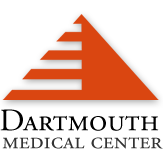Saturday, December 11, 2010
Food Allergy Guidelines
Newly released guidelines aim to standardize diagnosis, management of food allergy.
On the front of its Personal Journal section, the Wall Street Journal (12/7, D1, Beck, subscription required) reports in "Health Journal" that at present, pulmonologists, emergency physicians, dermatologists, gastroenterologists, pediatricians, and allergists diagnose and manage food allergies in a wide variety of ways. What's more, some tests on the market have not been scientifically validated, while the results of others are often misinterpreted. Such realities make it difficult to gauge the number of Americans suffering from food allergies.
In fact, there are "wildly divergent estimates of food allergies that range from 1% to 10% of the US population," the Los Angeles Times (12/7, Roan) reports. "Most likely, about 3% to 4% of Americans have some type of food allergy, although the prevalence appears to be increasing for unknown reasons, said Dr. Hugh A. Sampson, a professor of pediatrics at Mount Sinai School of Medicine in New York and past president of the American Academy of Allergy, Asthma & Immunology." In other words, "as many as 50% to 90% of people with presumed food allergies do not in fact have them, medical research suggests."
Now, however, newly released guidelines may eventually get "everyone on the same page when it comes to diagnosing and treating food allergies," the Washington Post (12/6, Huget) "The Checkup" blog reported. "An expert panel working with the National Institute of Allergy and Infectious Diseases (NIAID) compiled the comprehensive guide published...in the Journal of Allergy and Clinical Immunology." Again, the "goal was to provide healthcare professionals, whether they be allergy specialists, ED personnel, or general practitioners, up-to-date, science-based information about managing food allergies."
Altogether, "43 recommendations" were released, HealthDay (12/6, Reinberg) reported. "One thing the guidelines try to do is delineate which tests can distinguish between a food sensitivity and a full-blown food allergy, Sampson noted." Yet, the "two most common tests done to diagnose a food allergy -- the skin prick and measuring the level of antigens in a person's blood -- only spot sensitivity to a particular food, not whether there will be a reaction to eating the food. To determine whether the results of these two tests indicate a true allergy, other tests and a food challenge are often needed."
For those who are eventually diagnosed and react to a specific foodstuff, the "recommended therapy for anaphylaxis is described in the guidelines," Medscape (12/6, Hitt) reported. "Dr. Sampson stressed that 'epinephrine is the first choice for the treatment of anaphylaxis and many of the other drugs, such as antihistamines, corticosteroids, and such, are secondary medications.'"
Investigators also pointed out that "food elimination diets -- taking away one or a few specific foods to see if the reaction disappears -- may help," WebMD (12/6, Doheny) reported. "Oral food challenges -- exposing the person to the suspected food under medical supervision -- are thought to be helpful." As for prevention, "some pregnant women may hope restricting their diets during pregnancy or during breastfeeding may help their children avoid allergies," but the "experts disagree and don't recommend this." They fail to endorse "soy formula as a strategy for preventing the development of allergies," as well.
Notably, MedPage Today (12/6, Neale) reported, the recommendations "are meant to be easily understood and implemented by clinicians in varied specialties, according to Matthew Fenton, PhD, of the NIAID's Division of Allergy, Immunology, and Transplantation." He added, "We were very specifically looking to generate a document that was not written by allergists for allergists."
Dr. Fenton also explained that the "agency is now working on a summary for consumers," the CNN (12/7, Young) "The Chart" blog reported. "It's important for patients and their families to understand that the symptoms of food allergy can mimic several other very legitimate diseases such as food intolerance and gastrointestinal problems. It is important for them to work with their doctors so they can identify the true root cause of the health affect caused by food." The Wall Street Journal (12/6, Hobson, subscription required) "Health Blog" also covered the story.
Subscribe to:
Post Comments (Atom)



No comments:
Post a Comment